
During the long, hungry years of Yugoslav wars that stretched through the 1990s, all but the most skilled war profiteers among us lived in abject poverty. Several rounds of international sanctions were imposed against Serbia and Montenegro, and most of us had to survive on less than $2 per day to feed and clothe an entire family.
There was never enough food to go around, so we would do what others have done before and after: come up with creative ways to fill our bellies.
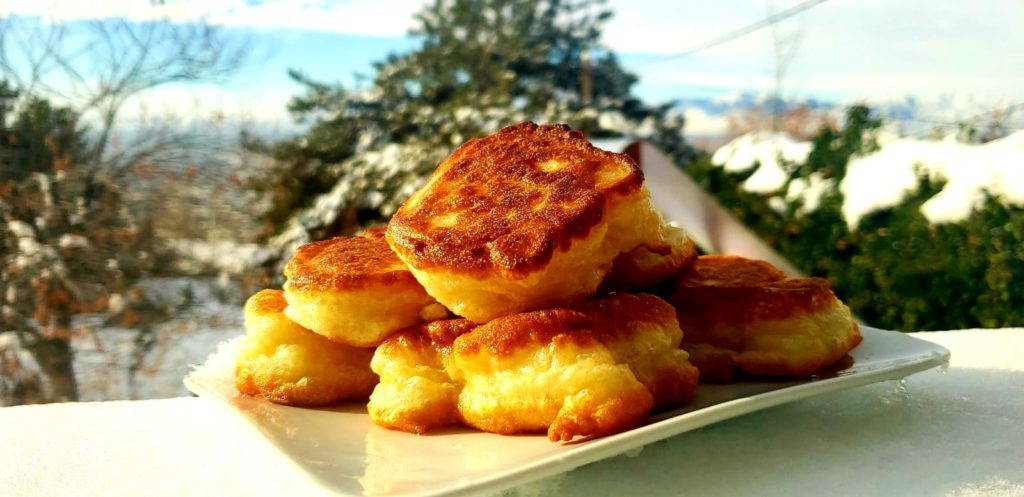
My maternal Grandmother, Ljubinka, who was born in the Austro-Hungarian Empire and had survived the ethnic cleansings and the famine of World War II, already knew all she needed to know: to survive the harshest of times and live on borrowed happiness, one must indulge in delicious fried things made with flour and fat. Add sugar to it, and there’s an abundance of quickly fried-up joy for you. So, nearly every day, my Grandmother would make uštipci, Serbian fried dough almost identical in taste and texture to frybread, which marks, perhaps more than anything else, the stubborn refusal of Native American peoples to die.
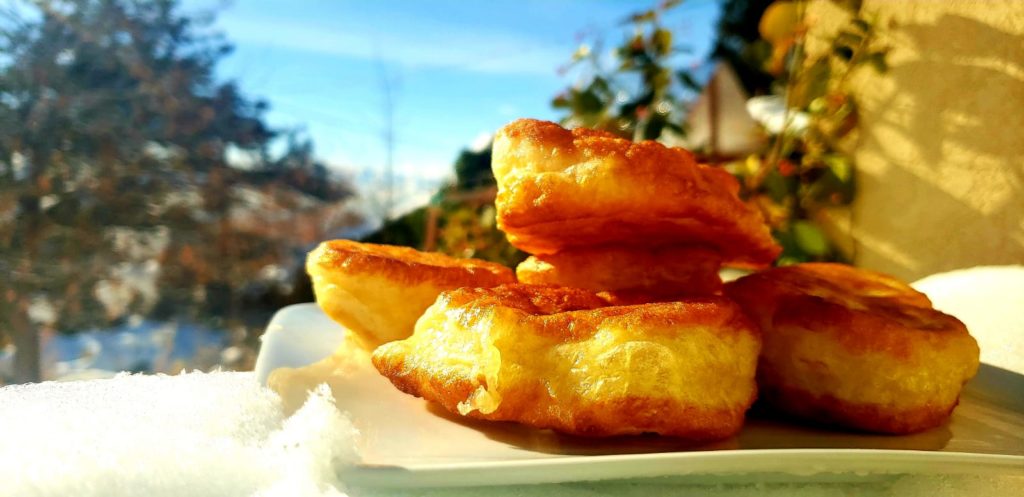
As unhealthy as these greasy morsels may be, they are a reminder of the ingenious forms of sustenance the oppressed can create when given next to nothing. Frybread, uštipci, bannock, puri, hushpuppies, bimuelos, and similar “famine foods” are, perhaps, the greatest symbols of survival and resilience when those in power wish you dead and you disappoint them by staying alive. This is why many peoples who have war, genocide, and (post)colonialism in common, have their own versions of fried dough dishes that have kept them alive for generations, against all reasonable odds.
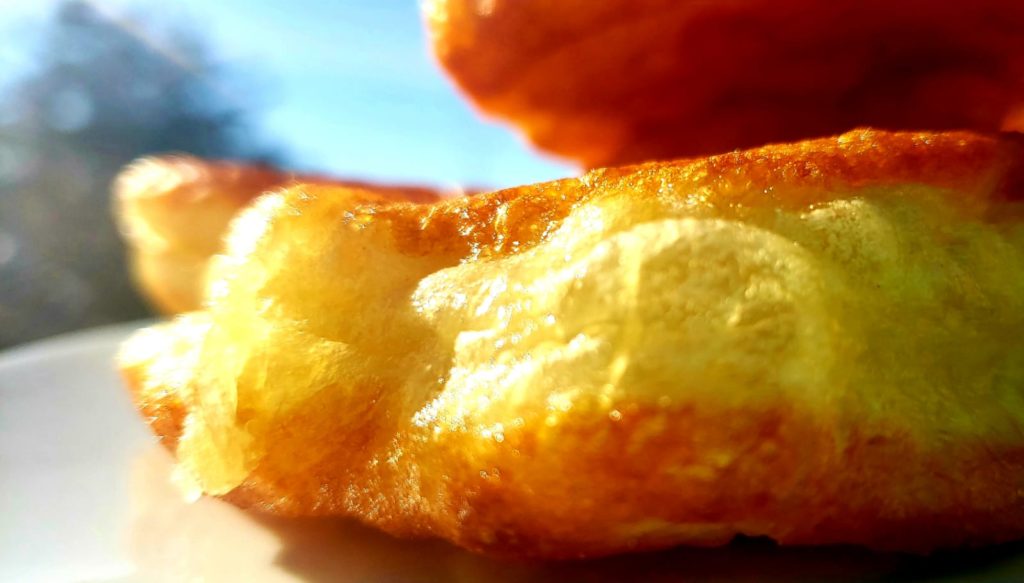
There’s many a Grandmother who still remembers long winters when dead birds fell from the skies like unwanted gifts and their own elders made them smile by making a feast out of destitution.
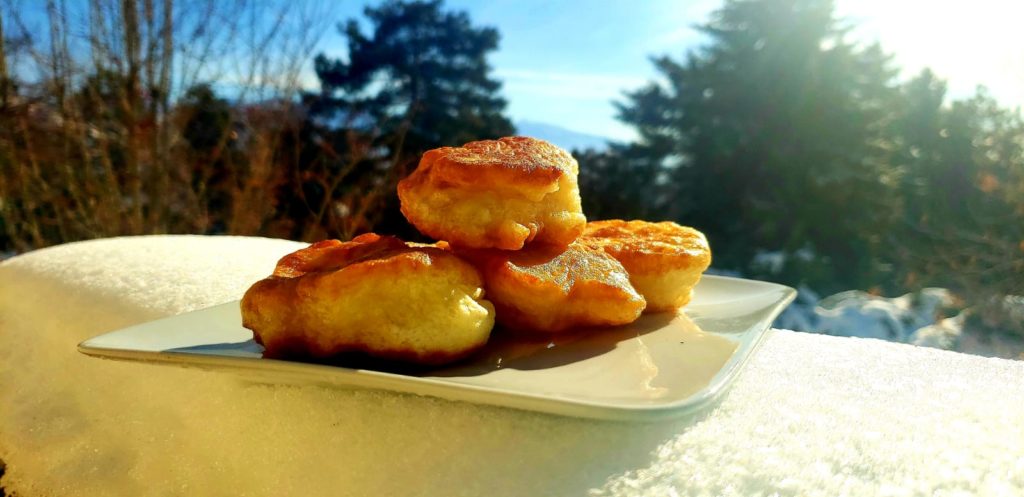
When I make uštipci, it’s usually in wintertide. I let the sleek dough slide off my spoon and into hot oil and I think of my ancestors who carried the memory of this recipe to me in their cells and on their tongues, like tight bundles with family heirlooms tucked inside.

I am in deep gratitude for their stubborn surviving that lead to me making uštipci for my family in my own sunny kitchen today, all the way across the ocean in this strange and beautiful Salty City I now call home.
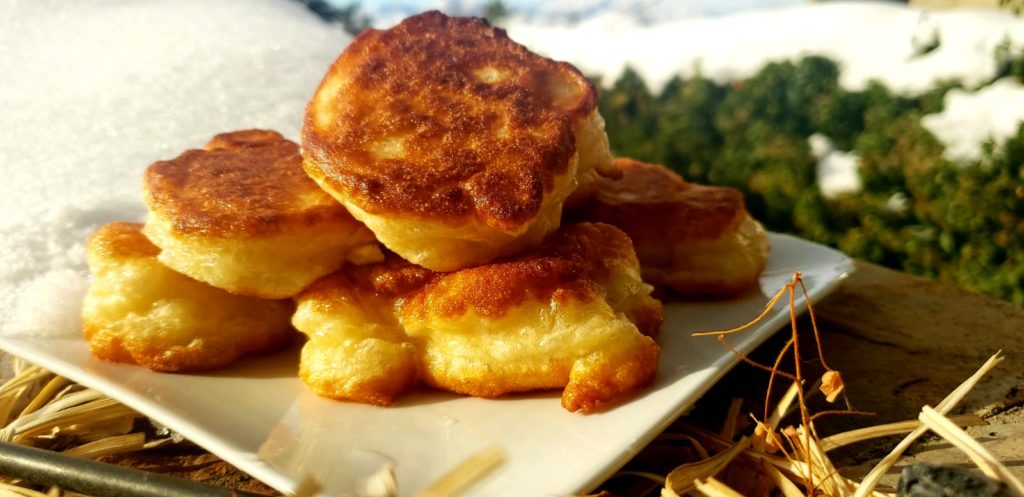
What are your stories of ancestral survival? I know you have them. If you didn’t, you wouldn’t be here and neither would I.

Uštipci recipe (Vegan):
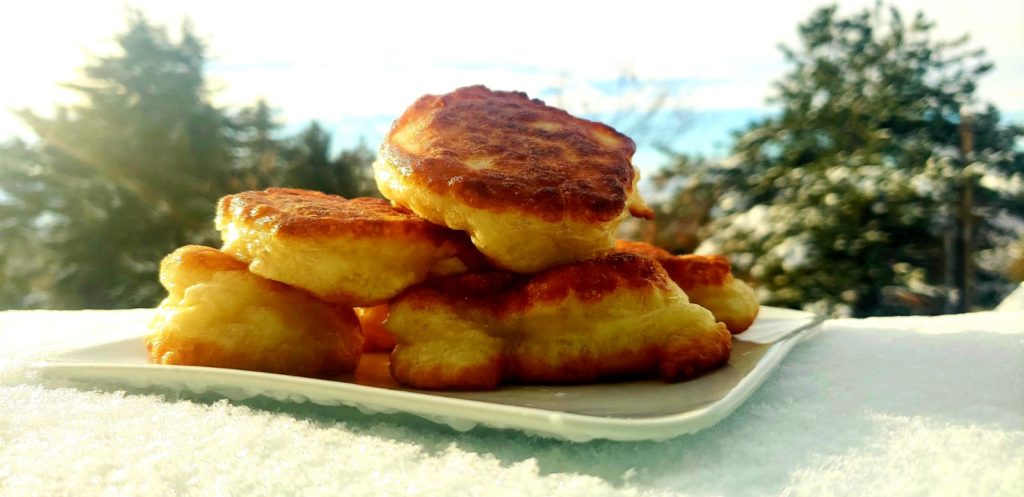
Ingredients:
- 1.5lbs flour
- 2 cups warm water
- 1 packet of dry yeast (0.25oz)
- 1 teaspoon salt (or more, if you like saltier dough)
- 1 tablespoon sugar
- Optional: 1 tablespoon brandy
- Optional for sweet version of uštipci:
- Some grated lemon peel
- 1 tablespoon vanilla extract
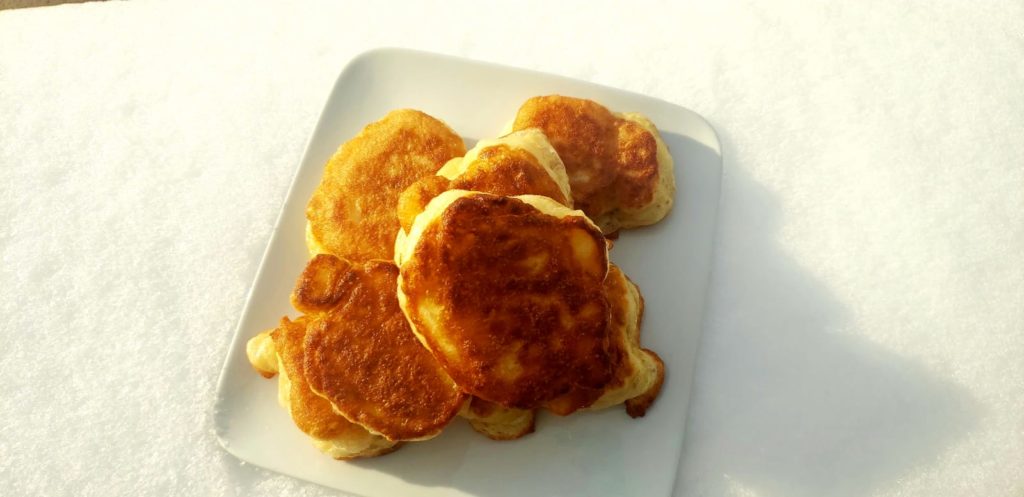
Method:
Sift flour and add salt (and grated lemon peel, too, if you’re using it). Place in a mixing bowl and add dry yeast, sugar, and warm water. Cover the bowl with a dishcloth and put in a warm spot for 15-20 minutes, to let the yeast rise.
Pour in the brandy and mix all the ingredients well with a spatula (don’t use an electric mixer). Continue mixing with a spatula for 5 minutes, until thick, sticky dough forms. You’ll know that the dough is ready if you see air bubbles forming across it. That’s a sure sign that your uštipci will be light and airy, just like Grandma’s.
Cover the mixing bowl with a dishcloth and let the dough “rest” in a warm place for another 15-20 minutes, until it doubles in size.
Heat about 1 inch of oil (my favorite frying oil is sunflower oil, but anything neutral in taste will do) in a deep cast iron skillet or heavy saucepan. The oil should be heated to about 350 F. One way to test the hotness of the oil is to dip the handle end of a wooden spoon in it. The oil will bubble around it when it’s ready.
Use a metal tablespoon dipped in hot water to place the dough in the hot oil. Dipping your spoon in hot water first helps prevent the dough from sticking to it. You’ll notice that your uštipci will rise as you fry them. Fry each for a couple of minutes on each side.
Once ready, place uštipci on a paper towel to soak up the extra oil. Serve warm with white cheese (e.g., feta or goat cheese), sour cream, cream cheese, or fruit preserves.
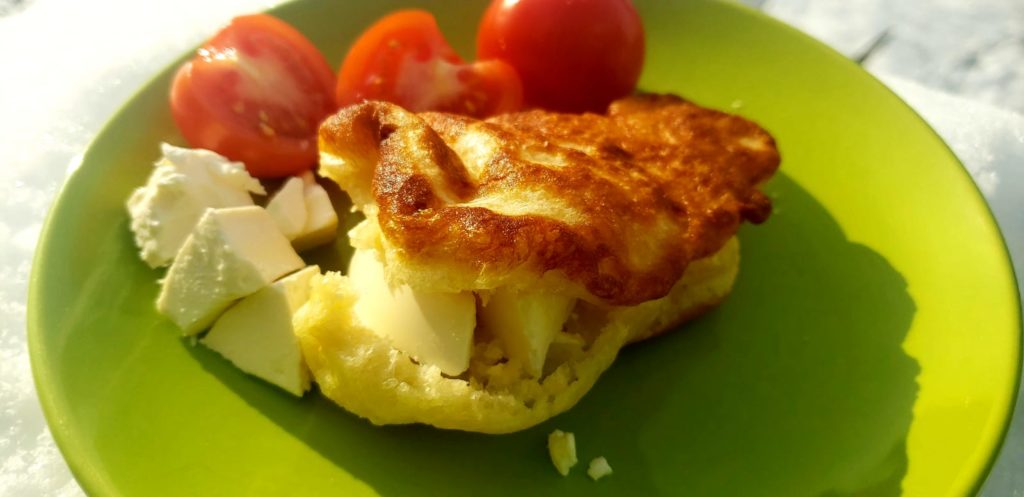

Like!! Really appreciate you sharing this blog post.Really thank you! Keep writing.
Thank you so much for reading! <3